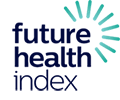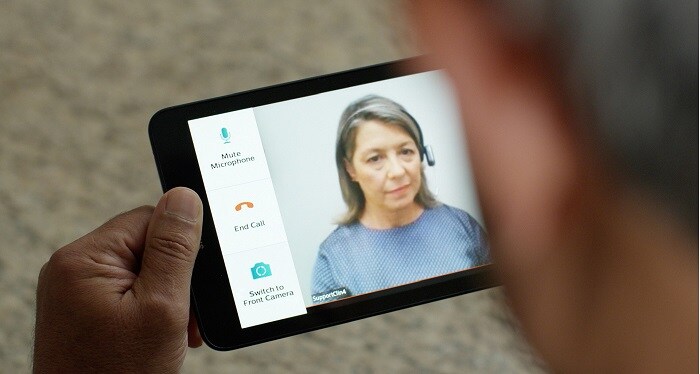Bringing care closer to home with digital health


Jul 28, 2020 - reading time 5 mins
By Ivy Lai Country Manager, Philips Singapore Ivy Lai is the Country Manager for Philips Singapore. She is responsible for overseeing Philips Singapore’s transition strategy from a consumer electronics company to a leader in health technology.

With COVID-19 accelerating our reliance on technology, healthcare providers and individuals have turned to digital technologies like telehealth and remote patient monitoring to facilitate access to healthcare services, reduce the risk of transmission and alleviate strain on stretched resources. The invaluable lessons and experiences drawn from the pandemic provides inspiration to rethink how and where we deliver healthcare, and a crucial need for transformation and keep up with the fast-evolving needs of patients.

In the past months we’ve seen how COVID-19 has increased our reliance on technology, with people staying home and many businesses going virtual. Similarly, healthcare providers and individuals have turned to digital technologies like telehealth and remote patient monitoring to facilitate access to healthcare services, reduce the risk of transmission and alleviate strain on stretched resources. While the pandemic’s threat will pass in the future, the invaluable lessons and experiences during this time provides inspiration to rethink our practices – in terms of how and where we deliver healthcare.
1] Digital healthcare’s surge as a booming opportunity
Philips’ Future Health Index (FHI) 2019 study points to the benefits of leveraging digital healthcare tools such as enhancing access by bringing care within reach of more people, boosting efficiency by reducing travel or waiting time, and generating greater satisfaction and experiences by both patients and healthcare professionals. Amidst safe-distancing measures, those with medical conditions have turned to virtual options like telehealth apps for diagnosis and treatment amidst safe-distancing measures. While a Bain & Company study1 has previously found growing interest in telemedicine in Asia Pacific for preventive health, convenience and ownership of care, the pandemic’s impact has driven a surge in local telehealth app users, with some local providers registering over 100% increase in visits1. The rapid adoption of digital tools by patients and healthcare professionals has opened doors for a renewed understanding of how healthcare can be accessed and delivered. The future of hospitals and provision of healthcare will undoubtedly shift from being primarily brick and mortar. 2] From hospitals to the home At its core, digital health technologies can drive impactful change in communities and deliver care directly in homes. Philips’ Lumify, a portable mobile app-based ultrasound solution used within Philips’ Mobile Obstetrics Monitoring (MOM) program, has enabled midwives to provide care and consultation to at-risk pregnant women in remote communities in Indonesia and Philippines, with the longer-term aim of reducing maternal mortality. Such outcomes are clear indicators of how digital technologies can help healthcare providers close gaps within the healthcare system and allow individuals to adopt digital health more intuitively. Digital technologies also allow care to be extended beyond the walls of healthcare institutions, improving patient outcomes through active monitoring and enabling healthcare management at both the individual and population level. These are key lessons derived from COVID-19. 3] Hurdles remain in bringing digital healthcare closer to home Despite its potential, more needs to be done to develop, integrate and utilize health technologies that are effective to enable health at all areas along the health continuum, and advance widespread uptake. A key hurdle of digital healthcare technologies lies in adoption, in creating a seamless and smooth experience for patients and healthcare professionals. It is crucial to place patient usability at the heart of new digital healthcare innovations, particularly factoring in the use scenarios, challenges and local cultural nuances that might hinder adoption. Smoothening these will also increase patients’ confidence and experiences of using such technologies. The upskilling of healthcare professionals to embrace digital healthcare tools as part of their everyday practice will also help individuals become more familiar and open to using digital healthcare tools. Having a holistic and connected framework for data utilization is also essential for interoperability and data sharing between patients and healthcare professionals, across healthcare institutions. According to the FHI 2019 study, while reciprocal sharing of data between patients and their healthcare professionals can help enhance patient experiences, it’s an area that is still lagging. Only a quarter of patients surveyed share health data from digital health technology or mobile health apps with their doctors. Similarly, just one in four Singapore healthcare professionals share patient information electronically with other healthcare professionals outside their health facility, citing concerns around data privacy and security, the lack of interoperability of record systems and lack of access to data sharing systems. Clear guidelines, a unified framework and processes around patient data management, storage and sharing, will help advance data sharing between individuals and their doctors, and across healthcare organizations. Finally, there is a need to reconsider organizational processes, which involves a deeper transformation in infrastructure, operational and financial models, and mindset change within the local healthcare system. Within organizations and in daily practice, healthcare professionals need to truly understand how such innovations augment the important work they do. For example, technologies like Artificial Intelligence (AI) have the potential to alleviate workloads by taking on repetitive tasks like analyzing data or scans and can also enable better patient outcomes by pre-emptively alerting healthcare professionals to a deterioration of a patient recovering at home. 4] Coming together to accelerate digital healthcare adoption As the healthcare landscape continues to be redefined by the pandemic, this also calls for a renewed transformation within the healthcare industry to keep up with the fast-evolving needs of patients. By shifting care from hospitals to homes, patients can take more ownership of their health. Through tracking one’s health indicators via mobile apps, patients benefit from virtual consultations and only go to hospitals for more complex needs, thus lessening the burden on the healthcare system. Government and policymakers are key stakeholders in encouraging the adoption of digital healthcare technologies like telehealth. We have already seen governments across APAC increasing budgets to spur adoption of technology in healthcare, enhancing technological infrastructure, diversifying platforms to accelerate patient diagnosis, and prioritizing a ‘smart’ healthcare system in the blueprint of national development and policymaking. These collectively have laid a good foundation and unified direction for healthcare providers, patients and policy makers to collaborate and enable wide adoption of digital healthcare. What is clear now is a redefined understanding of healthcare delivery, and the means by which patients can access healthcare – virtually or otherwise. If we want to bring healthcare close to home, it’s more crucial than ever to place the patient at the center, with a focus on bridging hurdles that hinder adoption of digital health technologies. Alongside this, increasing organizational efforts to educate, train and enable healthcare professionals to tap new tools to provide better, quality care for all. Footnotes: 1 Bain & Company, Covid-19 Accelerates the Adoption of Telemedicine in Asia-Pacific Countries
About Future Health Index
The Future Health Index (FHI) is a research-based platform designed to help determine the readiness of countries to address global health challenges and build sustainable, fit-for-purpose national health systems.
Share this article
Topics
Read more about this topic
-
![Hospitals of the future: time for Singapore to have a re-design?]()
October 22, 2021
-
![Healthcare ramifications for an endemic virus | Philips]()
July 19, 2021



